A Patient’s Guide to TBI Physical Therapy
Recovering from a traumatic brain injury (TBI) often means dealing with physical symptoms, such as headaches, balance issues, weak muscles, and vision problems. These symptoms can affect every aspect...
Published peer-reviewed research shows that Cognitive FX treatment leads to meaningful symptom reduction in post-concussion symptoms for 77% of study participants. Cognitive FX is the only PCS clinic with third-party validated treatment outcomes.
READ FULL STUDY
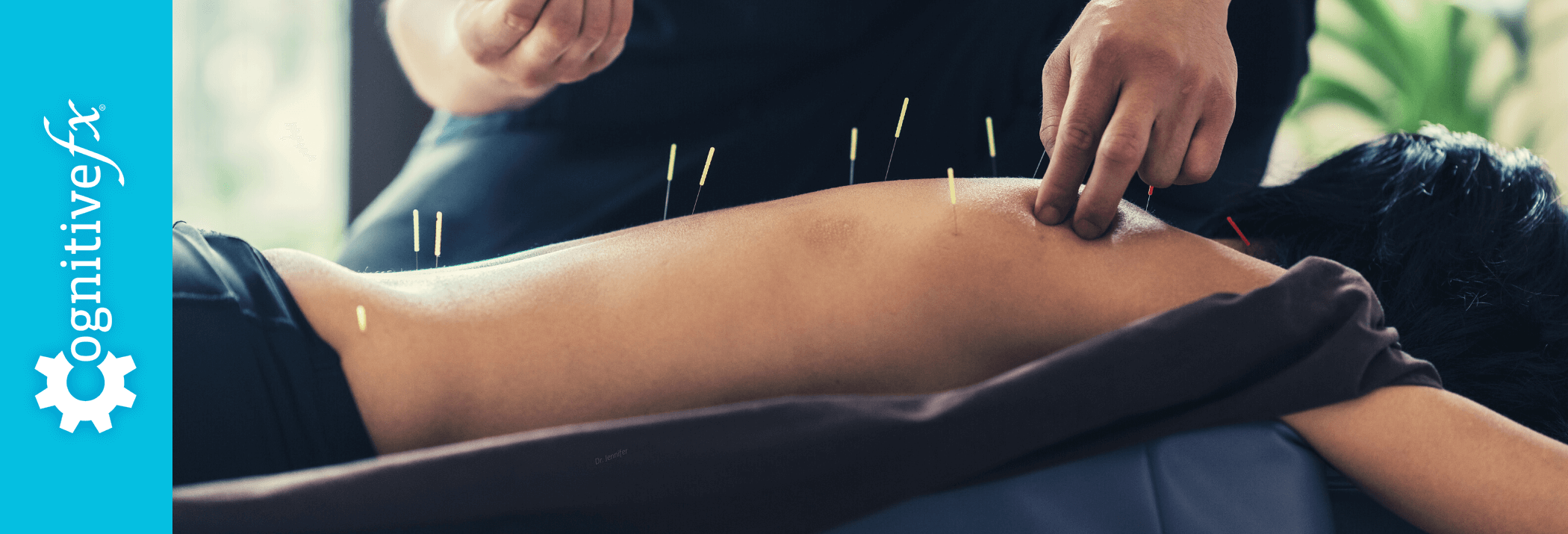
Dry needling and acupuncture can help relieve certain post-concussion symptoms. They are not a cure-all, either for acute concussion or post-concussion syndrome, but if you suffer from headaches, neck and back pain, or nausea, keep reading.
While we don’t offer either technique at our post-concussion syndrome treatment clinic, some of our patients choose to supplement our efforts with dry needling or acupuncture. And some of our physical therapists have performed it in previous positions.
We give you the run-down on both techniques in this post, including:
Dry needling is a new discipline (a few decades old, which is very young in the medical world), and acupuncture in Western medicine is still evolving. There’s some dispute over what the techniques can and can’t accomplish. Rather than discuss all the possible benefits, we’ll focus exclusively on what each has to offer for concussion patients.
If you have lingering symptoms from a mild traumatic brain injury (mTBI), you’re not alone. As many as 30% of mTBI patients do not recover without treatment. 95% of our patients experience statistically verified restoration of brain function after treatment at our clinic. To learn if you’re eligible for the program, schedule a consultation.
Note: Any data relating to brain function mentioned in this post is from our first generation fNCI scans. Gen 1 scans compared activation in various regions of the brain with a control database of healthy brains. Our clinic is now rolling out second-generation fNCI which looks both at the activation of individual brain regions and at the connections between brain regions. Results are interpreted and reported differently for Gen 2 than for Gen 1; reports will not look the same if you come into the clinic for treatment.
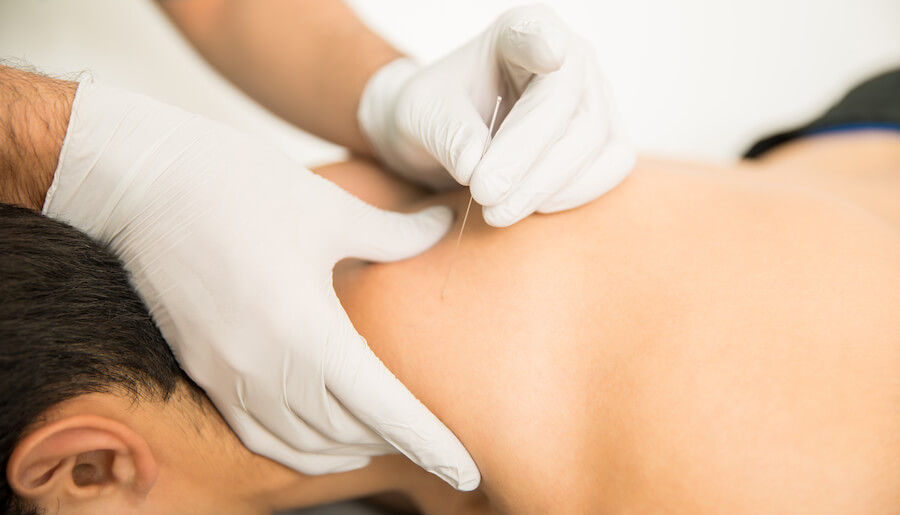
Acupuncture acts on both the nervous system and musculature. It’s a full-body approach to treatment that uses various needle depths and locations to accomplish the desired healing. Dry needling is a subset of acupuncture that therapists primarily use to release painful muscle knots. Acupuncture can include dry needling; dry needling cannot include acupuncture.
Before we dive into how they apply to concussion, here are the basics about each technique.
Acupuncture is part of traditional Chinese Medicine. It is thought to unblock the body’s energy flows. If practiced in the traditional manner, acupuncture is part medicine, part spirituality. You can identify practitioners of traditional acupuncture by words like meridian, chakra, chi, and yin and yang.
But most acupuncture in the West is missing this spiritual/energy component. Western acupuncture stimulates the nervous system, with a range of resulting positive effects. We now know that acupuncture increases blood flow and interacts with the body’s pain system, a major reason it’s used for pain control. This is the type of acupuncture we refer to throughout this post.
Licensed acupuncturists must pass a board examination. They may hold a medical doctorate or a similar degree; most states at least require a master’s degree. Dry needling regulations vary by state, but in many states you can receive dry needling from a licensed physical therapist. There are few regulations on the technique itself.
While acupuncture is used for a variety of reasons, dry needling is specifically used for pain and tension with a muscular cause. Therapists use only a few needles and target specific muscle locations. The goal is to insert the needle in a muscle knot (trigger point) to cause it to release. This often resolves pain and tension in nearby areas.
Both techniques have few side effects. Healthline only lists bleeding, bruising, and soreness at the needle site as possible negative effects (as long as it’s performed by a knowledgeable, licensed practitioner). Although rare, seeing an unlicensed practitioner of acupuncture has resulted in death due to punctured vital organs. Only visit acupuncturists who have been certified for their work.

This section will cover needed background on concussions so you can better understand your treatment options.
You can get a concussion (mild traumatic brain injury, or mTBI) from a blow to the head, severe jostling, or whiplash. You might also sustain a mild brain injury from other causes, like infections and viral disease, chemical treatments (like chemotherapy), carbon monoxide poisoning, and more.
Most people recover from an mTBI within two weeks of injury. But up to 30% of concussion patients have symptoms that persist for months or even years after their injury. Those symptoms stem from two issues following injury:
Neurovascular coupling (NVC) is the relationship between your brain’s neurons and the blood vessels that supply them. Concussions disrupt NVC, causing a host of symptoms, such as headaches, brain fog, mood swings, sleep problems, difficulty concentrating, and vision problems. Read more about neurovascular coupling here.
Concussions might also affect your autonomic nervous system (ANS). Symptoms of ANS dysregulation include headaches, exercise intolerance, changes in blood pressure or temperature, GI issues, muscle tension, pain, and more. Read more about ANS dysfunction (dysautonomia) after a head injury here.
Headaches and muscle tension are common symptoms of both acute concussion and post-concussion syndrome. They may stem from ANS dysregulation, NVC dysregulation, both, or other issues related to your injury. These symptoms are what dry needling and acupuncture can help with the most, although acupuncture can also assist with pain management throughout the body.
For patients with post-concussion syndrome, neurovascular coupling will not heal on its own. You’ll need targeted treatment to improve (we explain more about that below). Acupuncture and dry needling may be a helpful supplement to that treatment, especially for patients with ANS dysfunction.
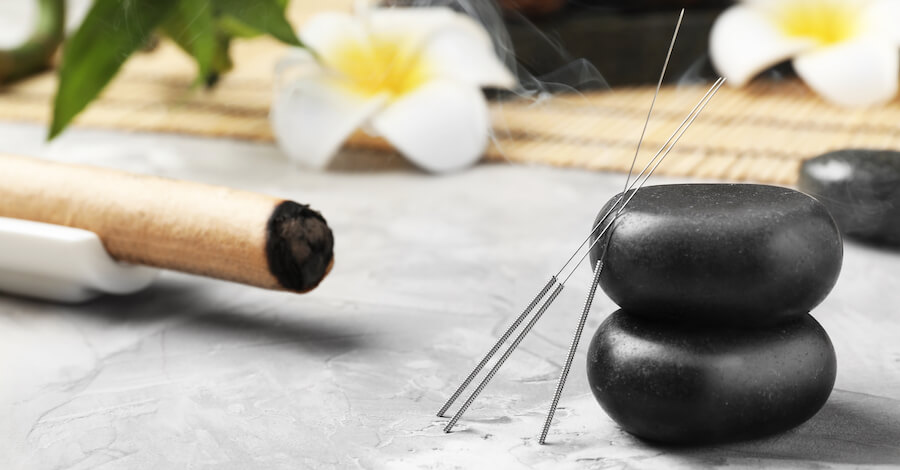
Acupuncture can increase blood flow at the site of needling, reduce inflammation, and alleviate pain. Acupuncture may include directly interacting with muscle (dry needling) but is mainly performed on specific points of interaction with the nervous system (acupuncture points). As a result, it may help patients who suffer from headaches, neck tension and pain, nausea, and other physical symptoms of a concussion.
Note: Many acupuncture studies have small sample sizes. More research is needed to strengthen and solidify our understanding of its effectiveness. The following information is based on available research.
Up to 90% of people who sustain an mTBI experience a post-traumatic headache. That headache could be tension-type, migrainous, neurovascular, or some combination of the above. Most doctors will prescribe medications (ranging from over-the-counter NSAIDs to migraine meds like Topamax). Sometimes these medications for concussion symptoms help; sometimes they fail to provide pain relief or even aggravate other symptoms. Acupuncture needling is a valid alternative treatment when medications are unhelpful.
Current research shows that acupuncture is at least as effective as commonly prescribed headache medications for post-traumatic headaches. Meanwhile, it has none of the side effects or negative drug interactions, which is especially important for patients using migraine medications. Migraine meds have the worst side effects for head trauma patients (since the side effects overlap with concussion symptoms) and can make diagnosis and treatment of post-concussion syndrome more complicated.
Acupuncture can also provide short-term relief from neck pain. And it may provide modest relief from nausea and vomiting. Scientists are investigating whether acupuncture helps with insomnia and other sleep problems; results are not yet available.
In summary, acupuncture is helpful when:
Remember that most acute concussion symptoms go away in the first two weeks. Some patients have symptoms for two months before they fully recover. Acupuncture can’t make an acute concussion go away, but it can help you feel better while you heal.
If you’re suffering from post-concussion syndrome, acupuncture will not cure you. It can’t fix the source of your suffering. But it may alleviate some symptoms and help you to function while you’re waiting for or pursuing more targeted treatment options.
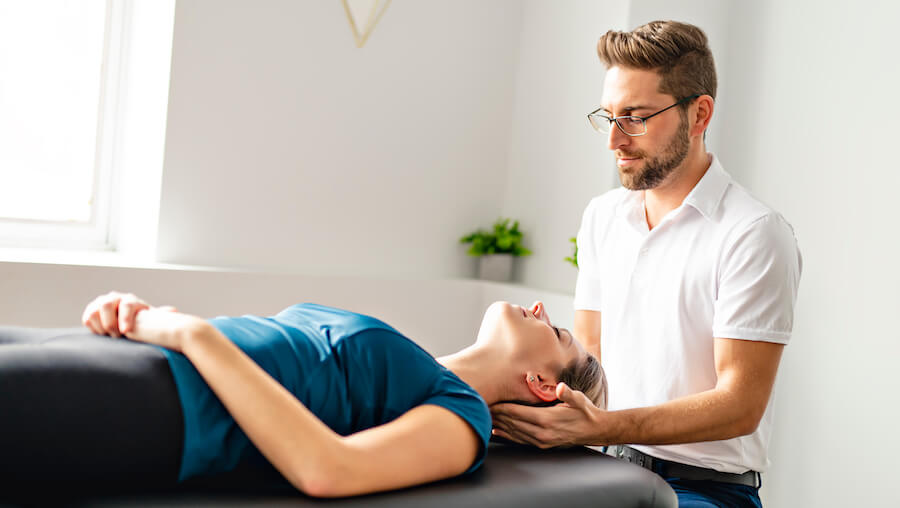
With concussion and autonomic dysfunction comes muscle tension. A majority of the patients we treat have tension in the neck and shoulders. While our treatment program includes massage of the suboccipital muscles (small muscles in your upper neck that are strained when your vision is affected by concussion) and the rest of the neck, we might not be able to fix knotted muscles. Fortunately, dry needling can.
Here’s how it works:
There are more factors in play, such as increased blood flow and oxygen in the muscle, but researchers are still working to understand how all those factors result in the release of tension.
Dry needling can produce a dramatic change in muscle health. At a physical therapy clinic, I saw a patient who could barely walk due to muscle tension. After one treatment with dry needling and other physical therapy, the patient felt so much better that he ran a triathlon the following week!
For acute and chronic concussion neck pain and headaches, dry needling may be helpful. It’s unlikely to help with other concussion symptoms, however.
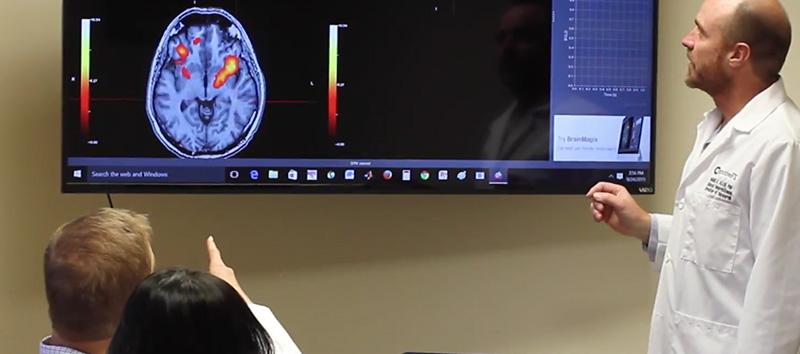
Acupuncture and dry needling are great resources for certain post-concussion symptoms. But patients with post-concussion syndrome suffer from a host of symptoms that impact daily living. Merely “managing” symptoms feels like a losing battle. That’s why it’s important to treat the root issue — your mild TBI — rather than treating each symptom individually.
But many of our post-concussion syndrome (PCS) patients struggle to find good treatment. Symptoms of PCS overlap with many other conditions, and not all patients realize they’ve had a concussion. Many doctors don’t know how to recognize the symptoms, let alone provide treatment when they do.
At Cognitive FX, we offer a unique treatment protocol for post-concussion syndrome. We’ve successfully treated patients from around the United States, Canada, Europe, and elsewhere. Few people recover completely from PCS; we aren’t peddling a miracle cure, and we won’t guarantee a return to life as it was before your injury. But we can tell you that 95% of patients who complete our Enhanced Performance in Cognition (EPIC) Treatment program show statistically verified improvement of brain function. The average patient’s improvement after one week of treatment is 77.5%.
How do we know? Each patient undergoes brain imaging before and after treatment. We’re not talking about a standard MRI — you won’t detect PCS with that. Remember how we said that post-concussion symptoms stem from dysfunctional neurovascular coupling? That shows up on an fMRI if you have the right data and analytics. We use a testing regimen known as fNCI: functional Neurocognitive Imaging.
From that imaging, we learn which specific brain regions were affected by your injury so we can tailor your treatment to what you need.
This is what makes our program unique. Many healthcare professionals don’t know how your brain, specifically, was affected by your injury. So they string together some known therapies and hope the combination helps. We don’t have to guess — we use innovative, proven, multidisciplinary therapies to encourage neuroplasticity (your brain’s ability to change and heal) so you can recover quickly.
With that in mind, here’s what treatment typically looks like at Cognitive FX.
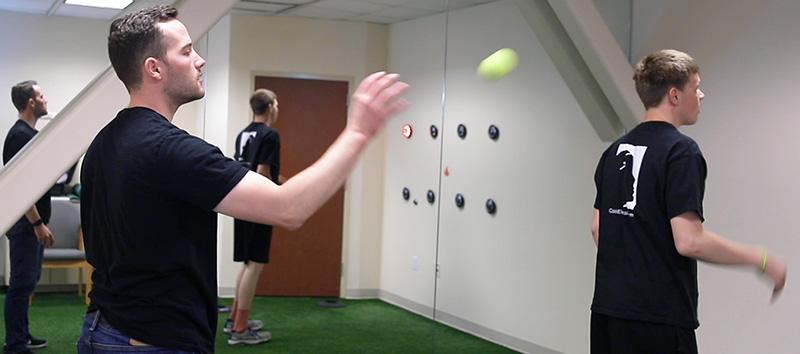
Our treatment team includes a neuropsychologist, a neuroscientist, a neuroradiologist, a psychologist, neuromuscular therapists, neurocognitive therapists, neurological occupational therapists, and others. All of these specialists work together to create an intense, individualized treatment regimen based on your fNCI results and the specific symptoms you’re experiencing.
In addition to the fNCI, every patient gets a standard structural MRI of the brain and cervical spine. We want to be sure there are no underlying conditions that could cause symptoms or interfere with treatment. If we do find anything, our neurosurgeon will indicate what’s wrong, and we’ll help you follow up with the appropriate specialists.
Each day of therapy begins with cardio to stimulate blood flow to the brain. (Many of our patients suffer from difficulty exercising. If that’s you, don’t worry. Our therapists monitor and help each patient through all physical activity). After cardio comes a mix of neuromuscular, cognitive, occupational, sensorimotor, and vision therapies — all designed to target your specific areas of injury.
Treatment runs from Monday through Friday, with the most intense days on Tuesday through Thursday. On Monday, you’ll meet the staff, tour our clinic, and complete assessments to serve as the basis of therapy. Your therapists will monitor your progress and modify therapies as needed.
One of our patients, Sam Pembleton, had been exposed to some of these therapies without success at other clinics. She visited other top clinics in the U.S. and Canada before finding ours. She explained, “The biggest difference was, at Cognitive FX, they were doing a bunch of different treatments at the same time, working different parts of your brain all at once.”
Here’s an example she shared from her treatment week that challenged her: “It was an hour-long therapy, and it was just one-on-one with someone. You’d do a cognitive activity, like sorting through a deck of cards, but at the same time someone would give you a four-letter sentence and you'd have to arrange it alphabetically while you were still sorting through the cards. It was a lot of multitasking!”
One of our patients, Aimee, completes a Dynavision exercise.
Another example is using the Dynavision board. In Dynavision therapy, patients hit lights as they appear on a board in varying patterns and speeds. This therapy helps with visual field deficits, eye-hand coordination, quick response times, and more.
Our patient Chris Nicastro said of the exercise, “You stand on the Bosu ball, and you have to hit the lights when they light up, but you're doing things like reciting the alphabet backwards and all this crazy stuff at the same time. It's hard. Your body and your brain are a lot more powerful than people give them credit for,” he reflected. “You can do something like that and push your brain to the point where it rewires.”
In addition to cognitive and physical therapies, patients learn mindfulness, relaxation, and proper breathing techniques. They meet at least twice with our psychologist during treatment. She will evaluate any emotional difficulties you’re experiencing.
At the end of treatment, every patient gets another fNCI scan. We compare the pre-treatment and post-treatment fNCI results to measure your improvement.
Every patient gets a comprehensive report detailing the performance of sixty brain regions during testing. Patients also receive an overall score of the brain’s performance in comparison to a healthy brain. We call this report the Severity Index Score (SIS).
Zero is the mean score for a non-injured brain, while 2.5 is the mean severity score for post-concussion syndrome patients. We shade areas of the chart to make it easier to see a range of standard deviations from the norm (+/- 0.75). Green can be within the normal range (but may indicate dysfunction for particular patients), yellow indicates moderate impairment (which can still produce significant symptoms), and red indicates a severely struggling brain.
Here’s a before and after example shared by our patient, Myrthe van Boon:
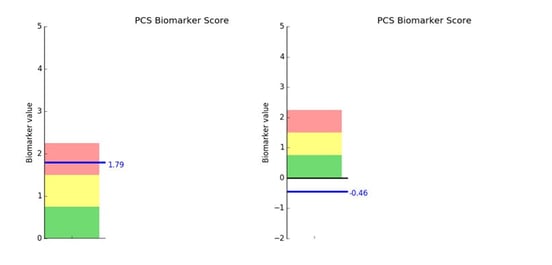 The SIS for Myrthe went from a 1.79 to a -0.46, indicating a return to healthier brain function.
The SIS for Myrthe went from a 1.79 to a -0.46, indicating a return to healthier brain function.
The chart on the left shows her pre-treatment SIS score. She was clearly in the dysfunctional (red) zone at 1.79. On the right is her post-treatment score. It’s actually below 0, but since it’s within the standard deviation at -0.46, it’s perfectly normal.
Myrthe’s before and after scores are typical of what we see in our clinic. Over 77% of our patients see improvement of between 60-100%, and 43% improve between 80-100% on the Severity Index Score (SIS).
Even better, patients also report a significant reduction in symptoms by the end of just one week — a 60% improvement, on average. You can read our post on living with post-concussion syndrome to hear how seven post-concussion patients worked to recover from post-concussion syndrome.
Acupuncture and dry needling are good options for pain management. Acupuncture may help with a few other symptoms, such as nausea.
As long as you’re not terrified of needles, they’re worth trying if you want extra help during your recovery journey. Both are inexpensive, especially if covered by insurance, and are unlikely to hurt you. By the way — if you’ve tried acupuncture and it didn’t help you, don’t discount dry needling. Not all acupuncture treatments include it.
For both techniques, you’ll know very quickly if they helped: You’ll feel a difference within 48 hours of your appointment. But neither technique can “cure” post-concussion syndrome or an acute concussion. If you want a long-lasting solution to your symptoms, you’ll need to find treatment for brain dysfunction stemming from your head injury.
If you have lingering symptoms from a mild traumatic brain injury (mTBI), you’re not alone. As many as 30% of mTBI patients do not recover without treatment. 95% of our patients experience statistically verified restoration of brain function after treatment at our clinic. To learn if you’re eligible for the program, schedule a consultation.

Toshi graduated from Brigham Young University Idaho with a degree in exercise science in 2016. He then graduated from Idaho State University with his Doctorate in Physical Therapy in 2019. While in school, he did rotations in vestibular therapy, outpatient orthopedic, pediatric and acute care settings. At Cognitive FX, Toshi is a Neuromuscular Therapist. He hopes to utilize his knowledge of vestibular therapy and orthopedics to help patients receive the care they need.
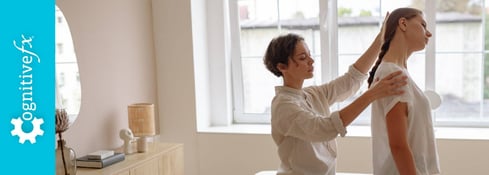
Recovering from a traumatic brain injury (TBI) often means dealing with physical symptoms, such as headaches, balance issues, weak muscles, and vision problems. These symptoms can affect every aspect...

If you’ve had a severe or mild traumatic brain injury (severe TBI or mild TBI) that’s left you with post-concussion syndrome (PCS), just thinking can be taxing. Cognitive health is “the ability to...

There is no exact time frame for recovering from a mild traumatic brain injury (mTBI), otherwise known as a concussion. The majority of people who sustain an acute concussion recover within a few...
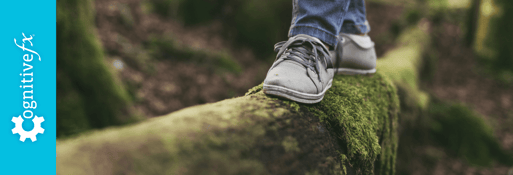
Dizziness. Nausea. Balance problems. Car-sickness. These are a few of the unpleasant symptoms of vestibular dysfunction after a head injury. Fortunately, they don’t have to be permanent; most...
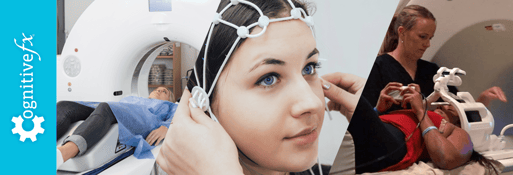
If you’re searching for answers and think you might have post-concussion syndrome (PCS), the path to diagnosis can be challenging. Few medical professionals are experts on the condition, and many...
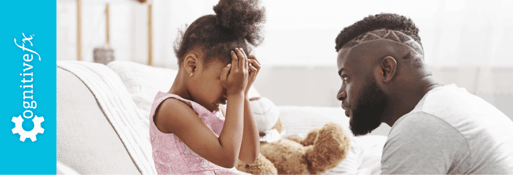
It’s normal for kids to get bumps and bruises when playing and participating in sports, but it’s always worrisome when your child hits their head. How serious is it? Could they have a concussion? Do...
Published peer-reviewed research shows that Cognitive FX treatment leads to meaningful symptom reduction in post-concussion symptoms for 77% of study participants. Cognitive FX is the only PCS clinic with third-party validated treatment outcomes.
READ FULL STUDY